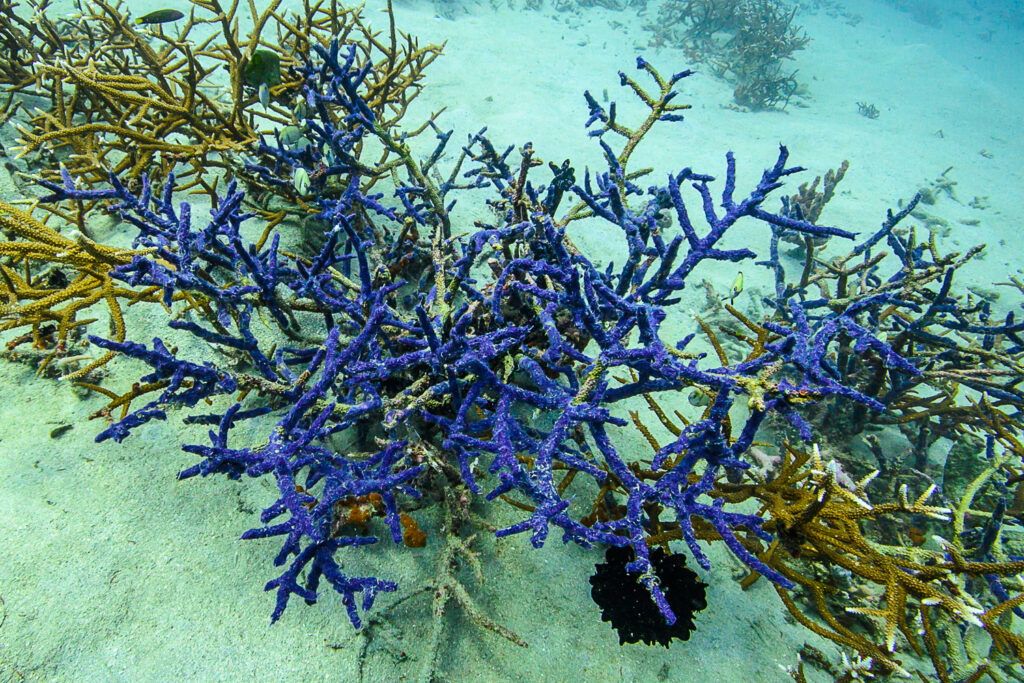
As if the list of threats to corals wasn’t long enough: climate change, pollution, parasites, and diseases. Add on the Anthropocene, the human age. It all has taken a serious toll on corals. And yet here’s another coral-killer that has been in the hobby for quite some time now—the coral-killing sponges.
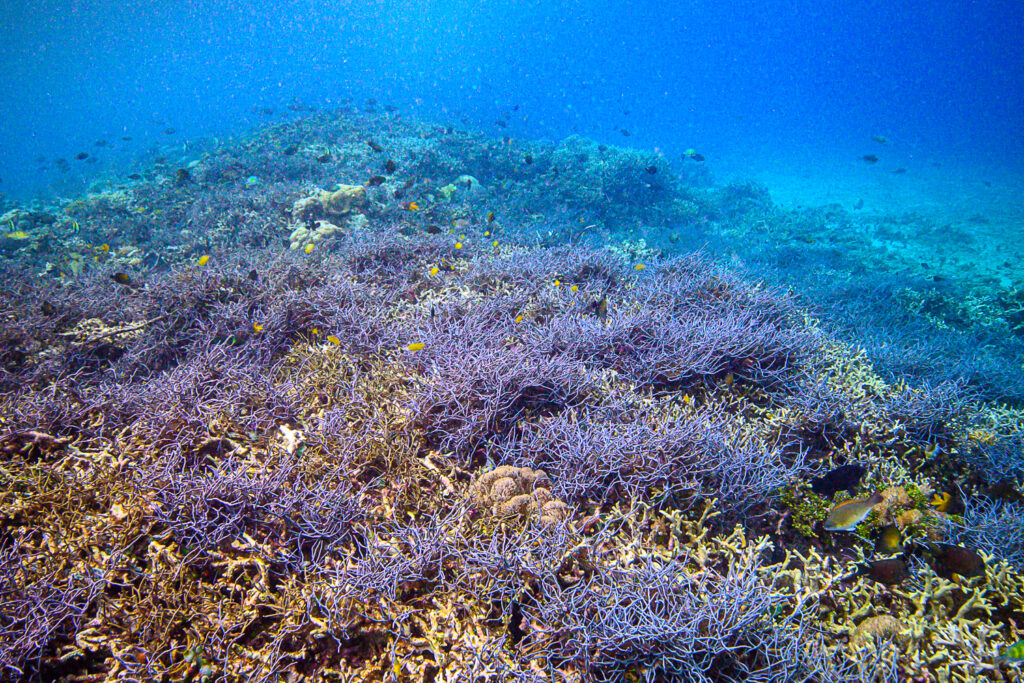
More and more species of sponges that can kill corals are being discovered and they are a rising concern. While they use to cause minor, very isolated damages, things appear to be changing. Some species seem to grow out of proportion and colonize and kill large colonies of corals, or even entire sections of reef.
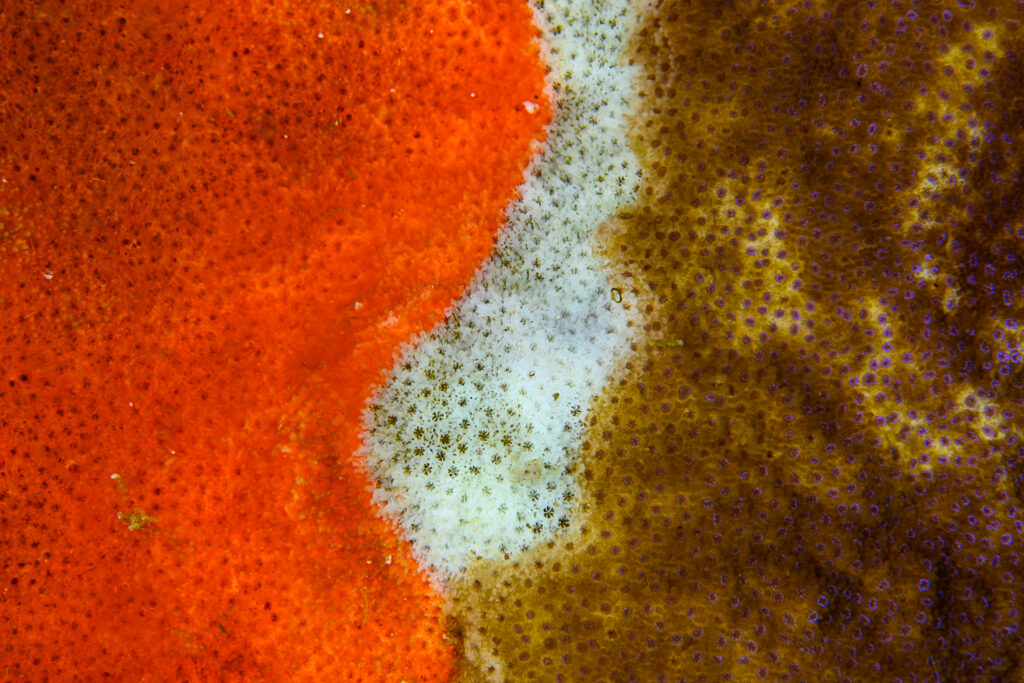
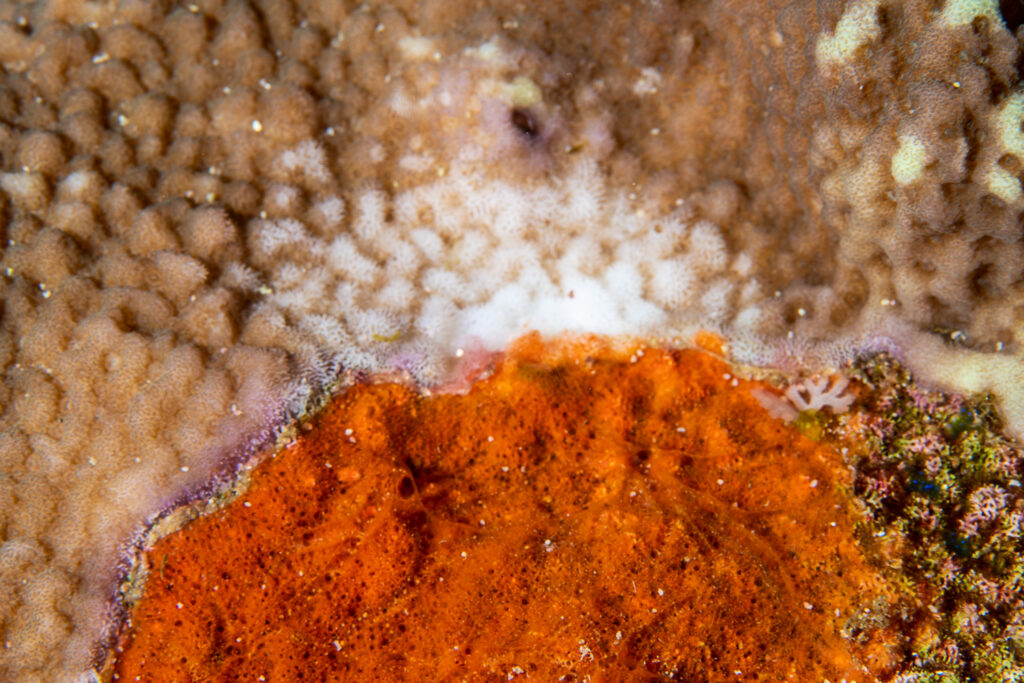
We know already that the future of coral reefs is algae- and sponge-dominated reefs, since these organisms are less affected by rising temperatures and pollution. Sponges are a perfect organism located at an evolutionary dead end.
Some Use Zooxanthellae
One common species of coral-killing sponge from the genus Chiona uses zooxanthellae and competes with corals for space. It quickly covers large areas of prime coral real estate.
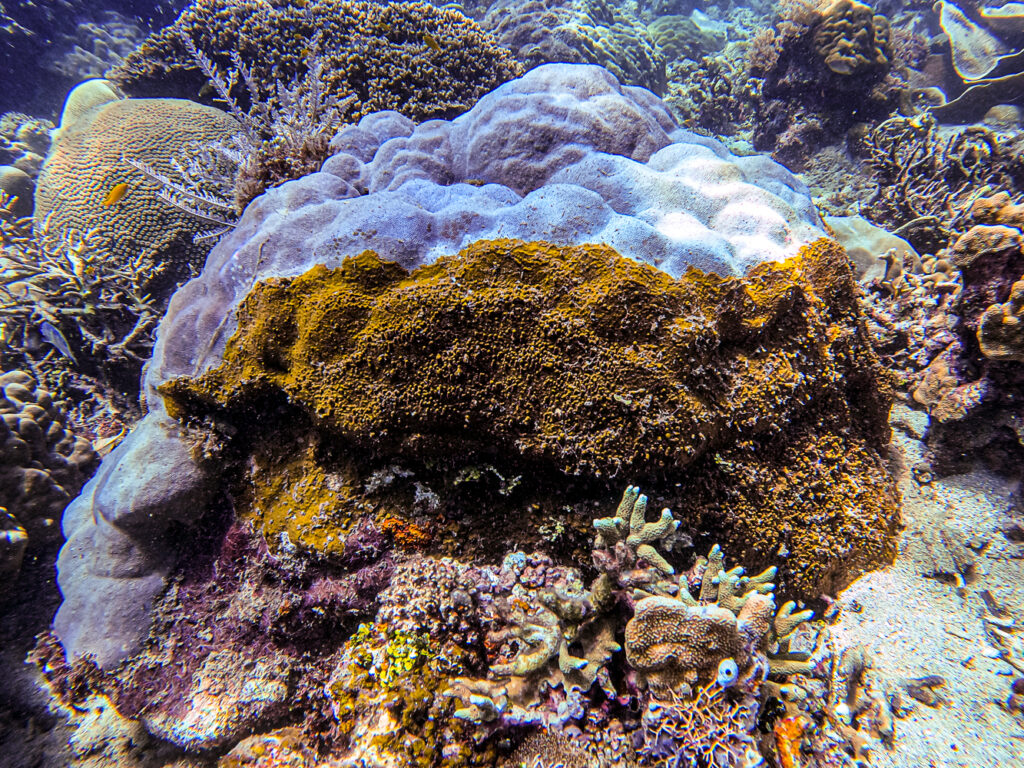
They usually don’t benefit from killing coral other by just taking over their space. They don’t ‘actively’ kill or digest the corals, they just overgrow them. They benefit from much faster growth and much faster metabolism.
Some Use Cyanobacteria
Terpios hoshinota, commonly known as Black Beard Sponge, is associated with endosymbiotic cyanobacteria for structure and metabolism. They also use prime coral real estate to gain substrate rather than food. Different individuals can fuse together, allowing them to cover large areas quickly.
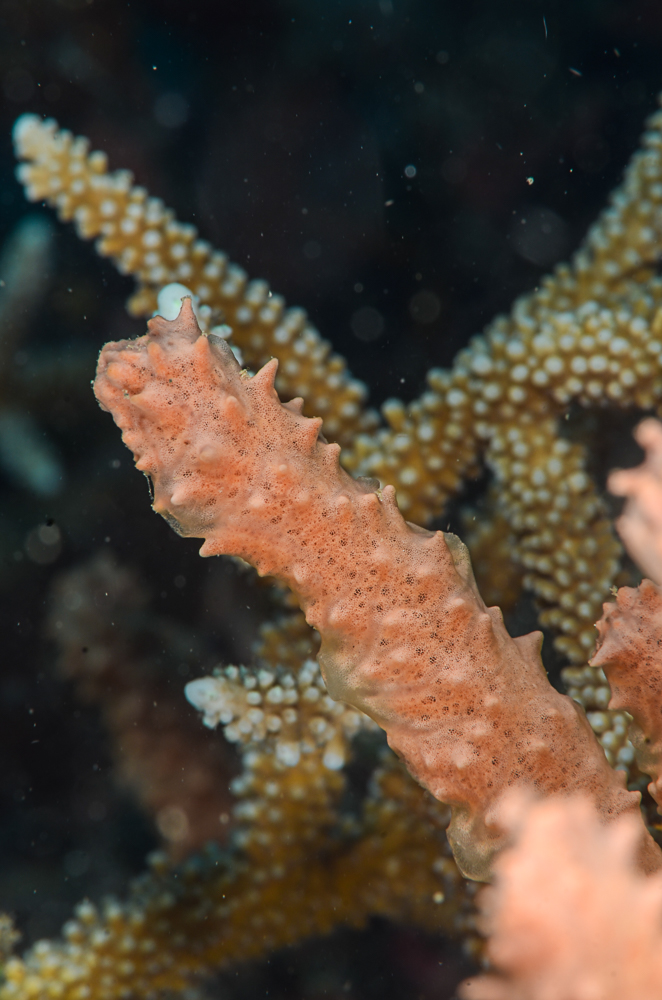
Overall, the presence of Terpios hoshinota on coral reefs can lead to significant ecological impacts and may threaten the health and survival of coral reef ecosystems.
Some Use Fungi
Chalinula nematifera is another common coral-killing sponge. It is characterized by a mauve coloration and by white, wavy filaments, produced by symbiotic fungi. It is filled with threads. The sponge separates these threads with a rapid extension that looks like a sneeze.
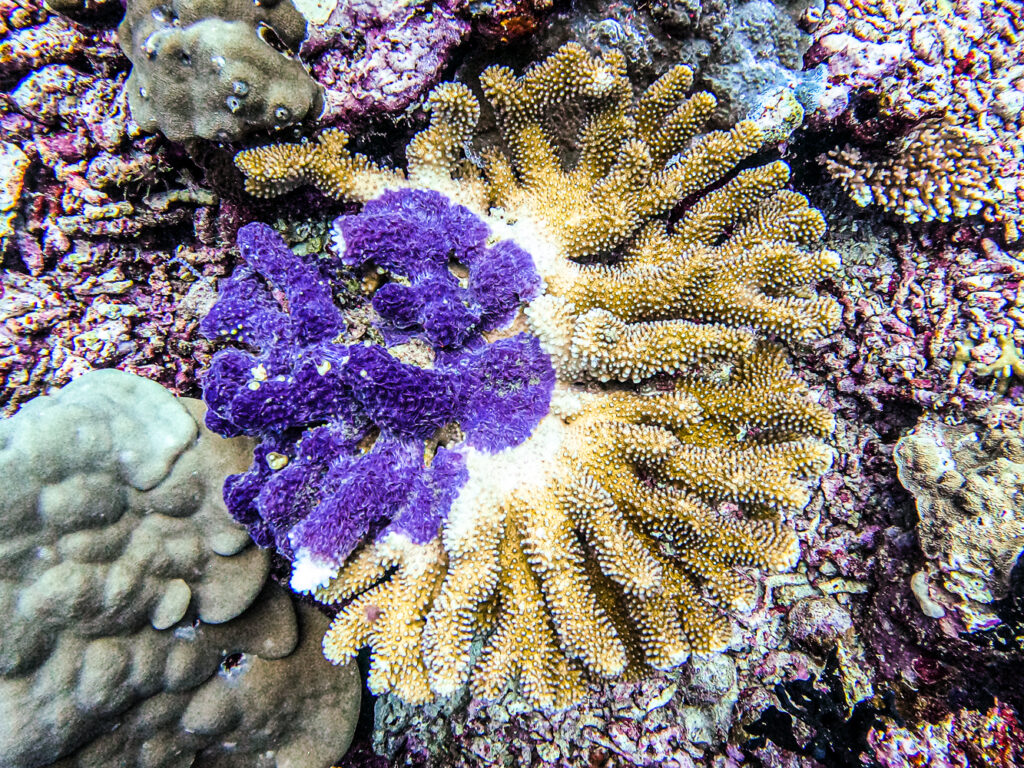
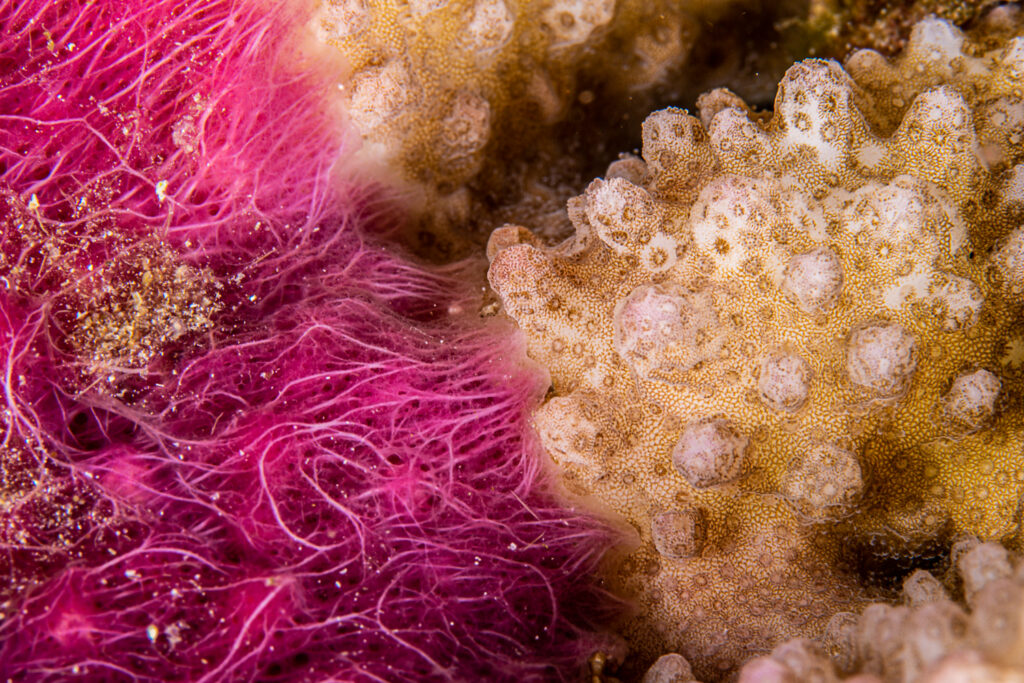
Little Standing In Their Way
All these sponges have very few predators. For Terpios hoshinota one predator snail was found: Joculator sp. Its larvae settle on the sponge.
One other funny fact about these coral-killing sponges is that some of them can incorporate any kind of material to protect themselves from UV radiation, including forams or plastics. So they might actually help sequester microplastics that are in the ocean’s water.
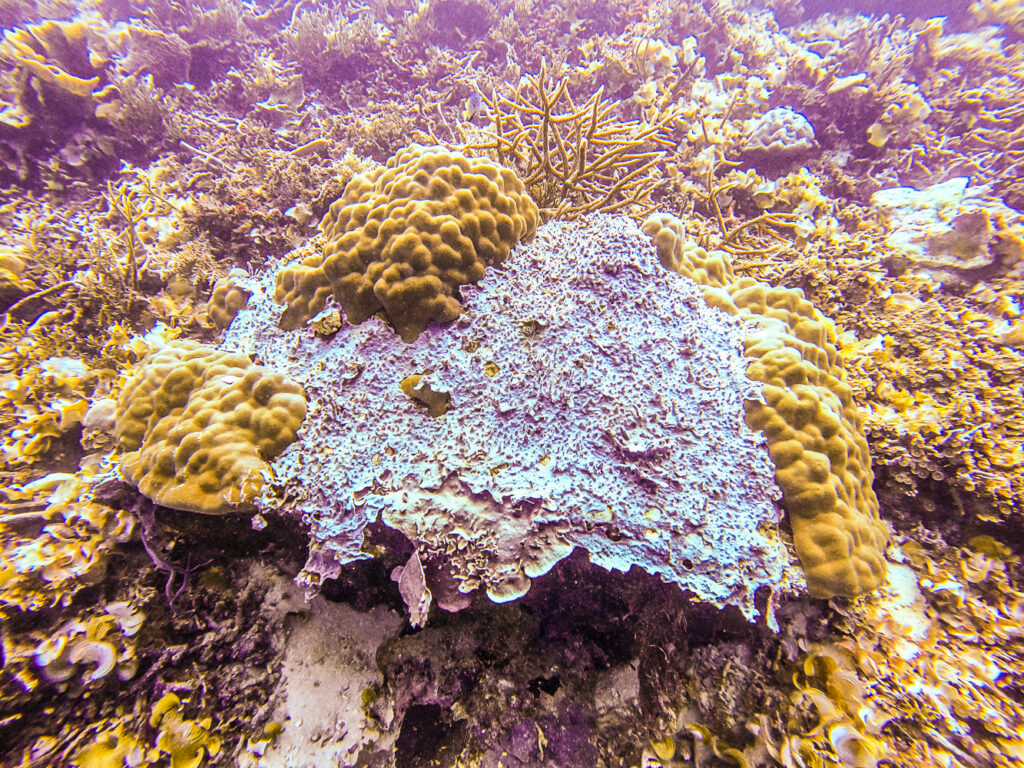
Considering that they are over 200 million years older than corals, is no surprise that sponges have developed many successful competitive strategies. And, they can outcompete corals very easily. Coral reefs will become more sponge reefs in the future. I wonder, are we going to see more sponges in reef aquariums too? Will they be pests, or welcome guests?




